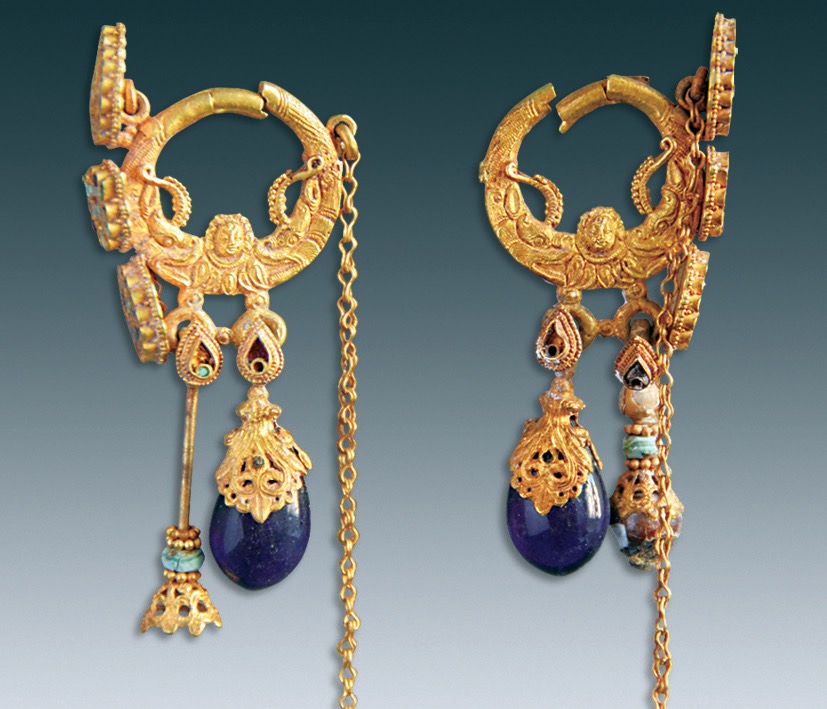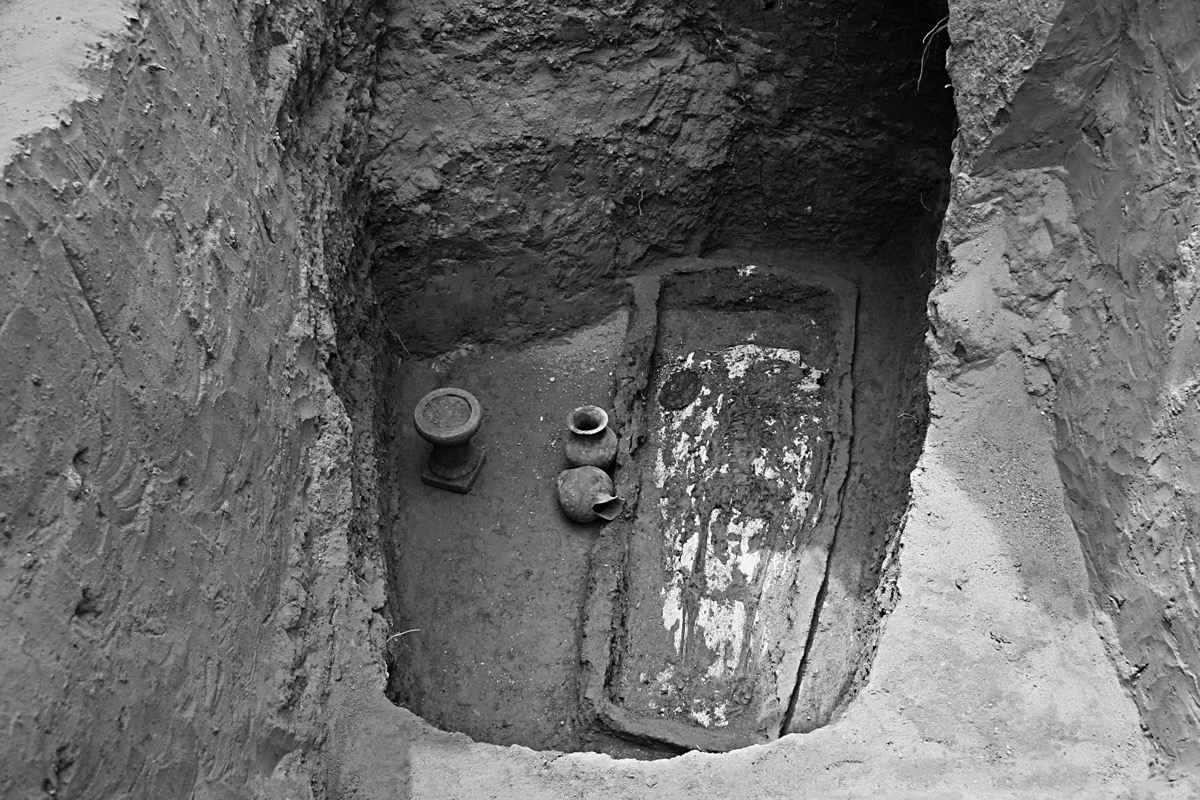Ancient Bling: Exquisite Jewelry Found in Tomb of Chinese Woman

Around 1,500 years ago, at a time when China was divided, a woman named Farong was laid to rest wearing fantastic jewelry, which included a necklace of 5,000 beads and "exquisite" earrings, archaeologists report.
Her tomb was discovered in 2011 in Datong City, China, by a team of archaeologists with the Datong Municipal Institute of Archaeology who were surveying the area before a construction project. The researchers excavated the tomb, conserved the artifacts and reconstructed the necklace.
Farong's tomb was dug into the ground, and her skeleton (which is now in poor condition) was found lying in a coffin archaeologists said. [See Photos of Farong's Burial and Exquisite Jewelry]
"The skull rests on a pillow of lime, and inside the pillow are two bricks with rope patterns," the archaeologists wrote recently in the journal Chinese Cultural Relics. Her age at death is unknown.
Her epitaph, found by the tomb entrance, reads simply, "Han Farong, the wife of Magistrate Cui Zhen" (as translated in the journal article). In China, the surname is traditionally written first and the given name second.
While no other burials were found in Farong's tomb, the archaeologists did discover two other tombs nearby that are in the process of being studied.
Based on the design of Farong's tomb, and the artifacts found inside it, the archaeologists determined she lived around 1,500 years ago, a few decades before the collapse of the Northern Wei dynasty (386-534), which controlled part of northern China. According to historical records, Datong City, where the woman was buried, was the dynasty's capital until 494.
Get the world’s most fascinating discoveries delivered straight to your inbox.
"Exquisite" earrings
The two earrings the archaeologists found are difficult to describe in words. Made of gold, the earrings contain images of dragons and a human face.
"The human figure has curly hair, deep-set eyes and a high nose; wears a pendant with a sequin-bead pattern on its neck; and has inverted lotus flowers carved under its shoulders," wrote archaeologists in the journal article. The earrings are also decorated with gold, teardrop-shaped designs inlaid with gemstones, as well as gold chains and amethysts that would have hung down the sides of Farong's face.
"In recent years, many gold earrings have been unearthed from Northern Wei dynasty tombs, but the earrings unearthed from this tomb are surely some of the most exquisite," the archaeologists wrote.
Earrings with similar designs were found in 1978 in northern Afghanistan, a sign that the Northern Wei dynasty had strong cultural ties with people in central Asia, the archaeologists said.
Lots of beads
Farong was laid to rest wearing a necklace made of about 5,000 beads. The thread that held the necklace together had decomposed; however, "since the distribution [of the beads] was very concentrated, it was possible to reconstruct it based upon the position of the pieces at the time of excavation," the archaeologists wrote.
The necklace "consists of 10 large and small gold beads, nine flat gold pieces, two crystals, 42 pearls, and more than 4,800 small glass beads," the archaeologists wrote. "The small beads are the size of millet grains, some black and some green, and all are oblate, each with a perforation in the middle."
An article reporting the discovery of Farong's tomb was published in 2015, in Chinese, in the journal Wenwu. This article was translated into English in the journal Chinese Cultural Relics.
Original article on Live Science.

Owen Jarus is a regular contributor to Live Science who writes about archaeology and humans' past. He has also written for The Independent (UK), The Canadian Press (CP) and The Associated Press (AP), among others. Owen has a bachelor of arts degree from the University of Toronto and a journalism degree from Ryerson University.

